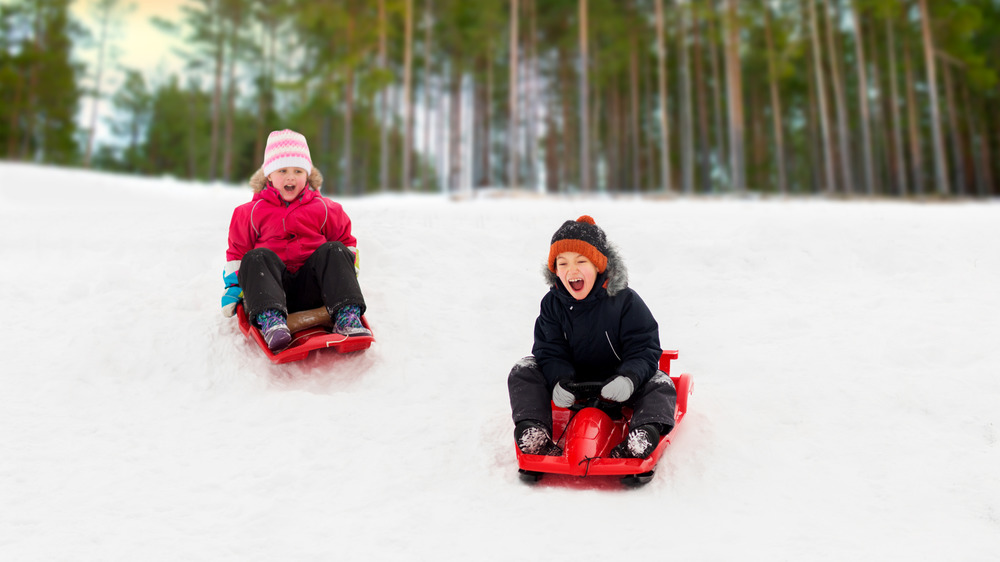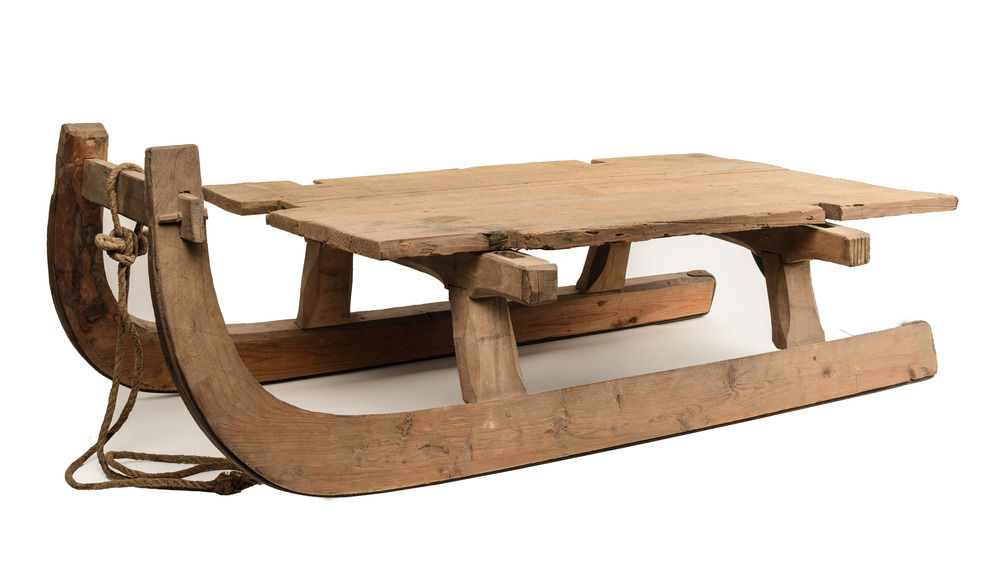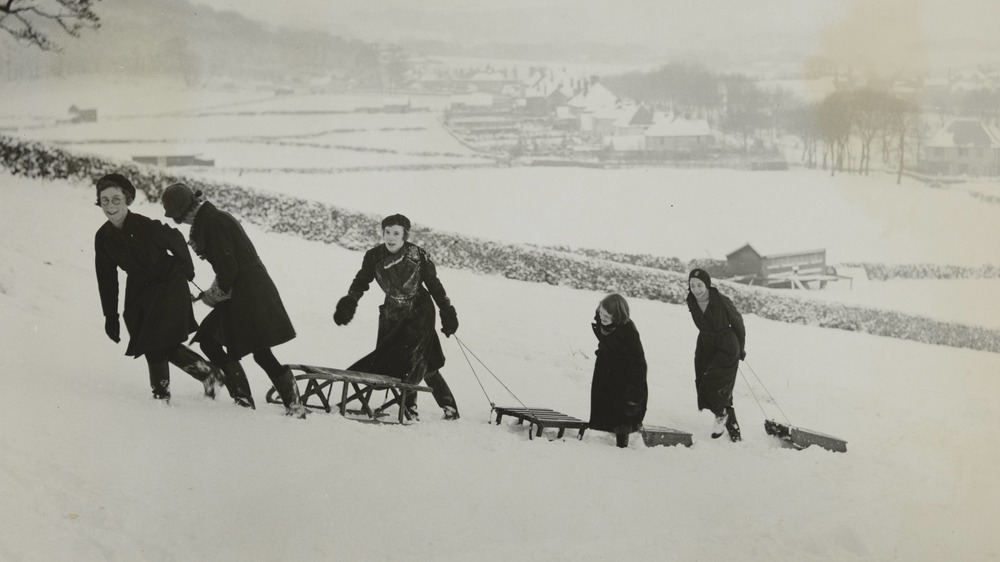The History Of Sledding
Today, few activities are as synonymous with the winter as sledding. In colder regions around the world, children excitedly wait for the next snow day so they can go out sledding with their friends. Adults can equally enjoy the thrill of speeding down an icy hill on a wooden sled — but they may prefer not to admit it, for fear of seeming childish. Either way, sleds remain a popular gift around the holidays, and can come in all shapes and sizes.
But how much do you know about the history of sledding? If you were asked to name one famous sled, you'd likely mention "Rosebud" from Orson Welles' classic 1941 film Citizen Kane. Certainly, Citizen Kane helped cement sledding as a quintessentially American pastime. But sleds have a much longer history than that. From the ancient Egyptians to the Native American tribes of Canada, sleds have been used to transport goods and people for millennia. In fact, sleds spent most of their history as a tool for labor, only emerging as a toy in the past few hundred years.
According to KidzWorld, the word "sled" comes from the Middle English world "sledde," which means "slider." But while most of us today associate sleds with winter fun, sleds were originally used to carry out work.
Sleds were originally used for labor
Per the Wall Street Journal, the earliest known sleds date back nearly 4,000 years to the ancient Egyptian civilization. "Wait a minute," you might be thinking. "There's no snow in Egypt!" That's mostly true, but Egyptians found that sleds were able to work equally well on sand, especially when that sand is watered down first. Wall paintings from 1900 BCE depict large teams of Egyptian laborers using sleds to transport massive rocks and other construction materials, including when they built the pyramids.
The Wall Street Journal adds that one of the earliest instances of "sleds" being used for human transport was in 103 BCE. That year, the ancient Cimbri tribe (according to the Ancient History Encyclopedia, they were either Germanic or Celt) led a successful sneak attack on the Romans by using their own shields as sleds. This tactic allowed the Cimbri to cross the Alps into Northern Italy.
Per PGPedia, "toboggans" are another type of sled with a long history. Northern Canadian tribes like the Innu and Cree have been using wooden toboggans to transport goods and people for centuries. This practice was adopted by European fur traders in the 1800s. Similarly, European explorers used sleds and sleighs to travel across the Arctic and Antarctic. Today, dog sleds remain a fairly popular method of transportation in icy countries.
Sledding has evolved into a wintry sport
According to the Wall Street Journal, one of the earliest instances of sleds being used for pure fun was in 1650s Russia, when young Russian aristocrats participated in a dangerous game; they built wooden tracks, then slid down them in sleds carved from ice.
Since then, sledding has evolved into a formalized sport. Per the Encyclopedia Britannica, there is a variety of forms of sled racing, including tobogganing, bobsledding, luging, skeleton sledding, and dogsled racing. Each of these sports has a unique history. Bobsledding, for example, originated in the late 1800s in the Swiss Alps. Per Britannica, the first organized bobsled competition took place in 1898 at the St. Moritz resort town in Switzerland. It spread in popularity and became an internationally-recognized sport in 1923. (History can be contentious, though; Upstate New York also claims to have invented bobsledding.)
Today, more people participate in sledding as a leisurely activity than as a competitive sport. Sledding is particularly popular among children. Per the Wall Street Journal, when child sleds were first mass-produced in Maine in the 1860s, they were controversial; accidents and injuries abounded. But by the Great Depression-era, sledding was a well-established American activity, as sleds were one of the few toys that American families could afford. Plenty of sled designs exist today; Samuel Leeds Allen's steerable "Flexible Flyer" was the first to reach mainstream success. Now, whenever it snows, you can be certain to find many kids sledding in the park.


